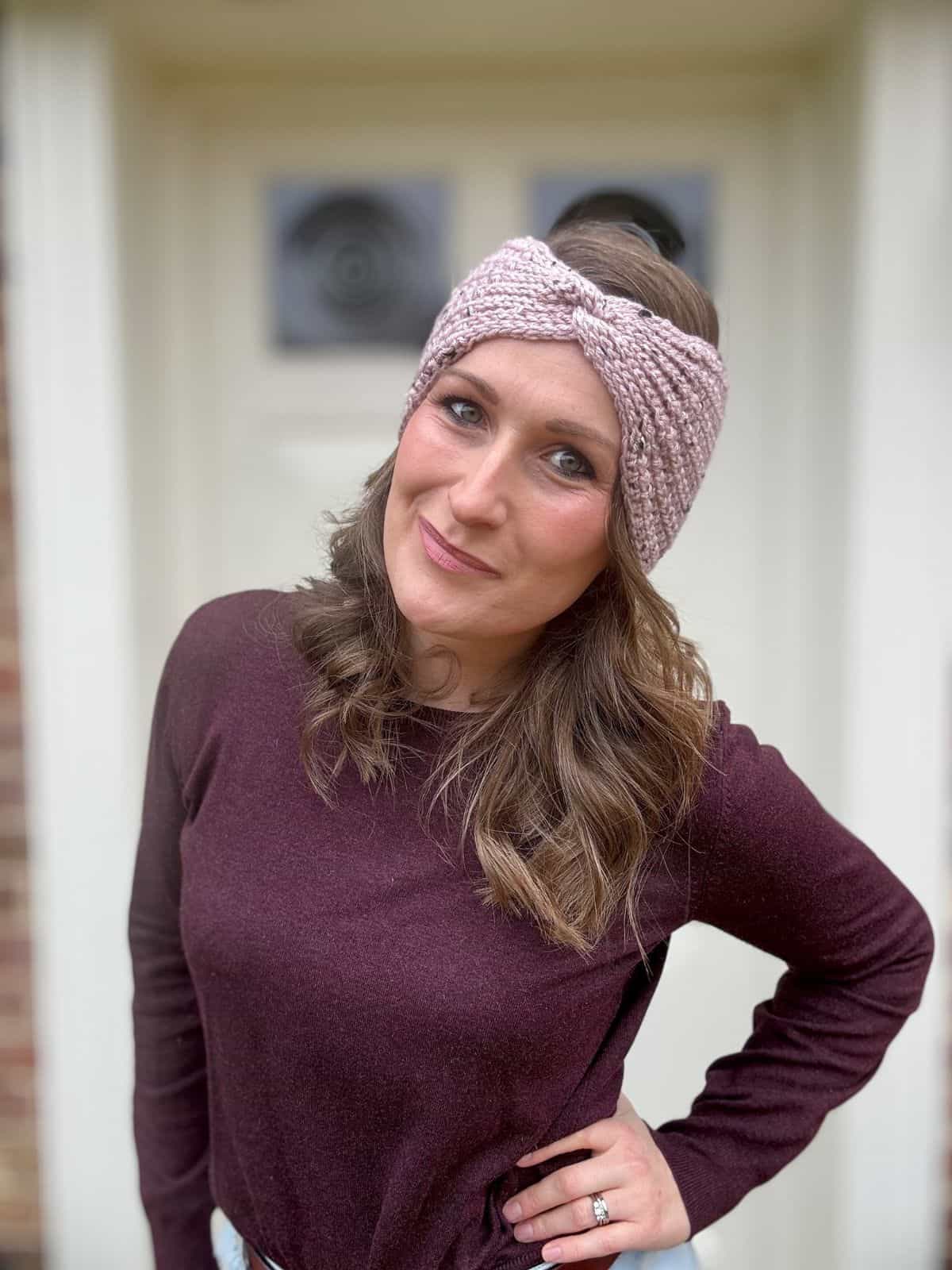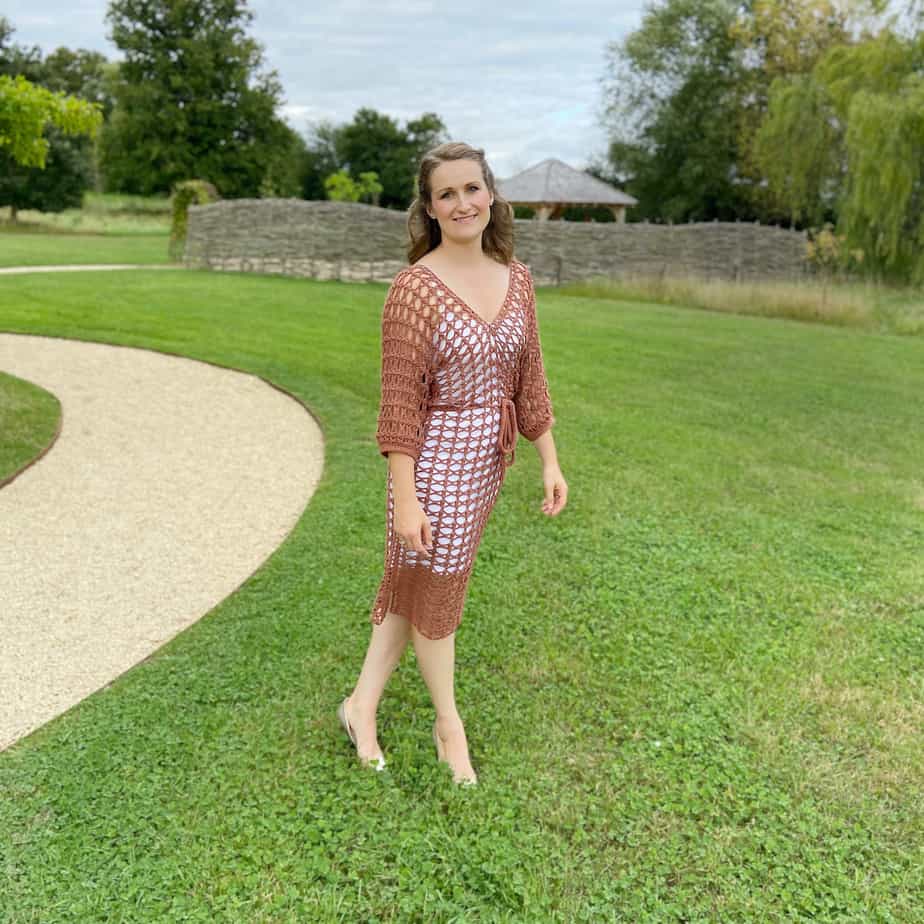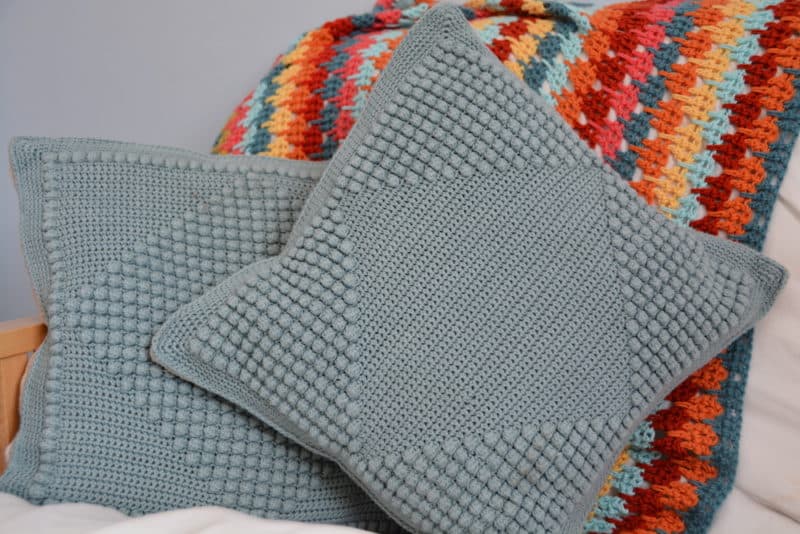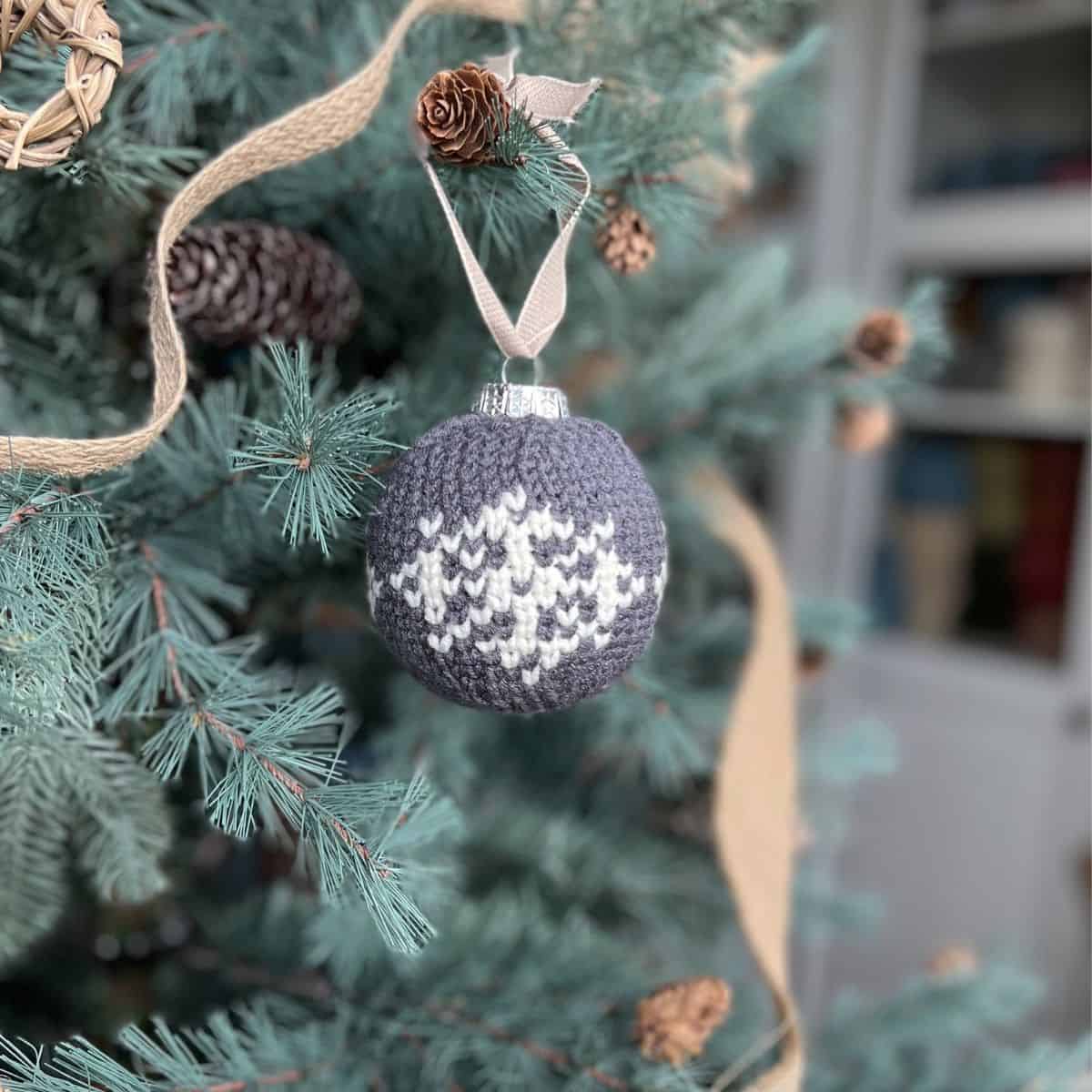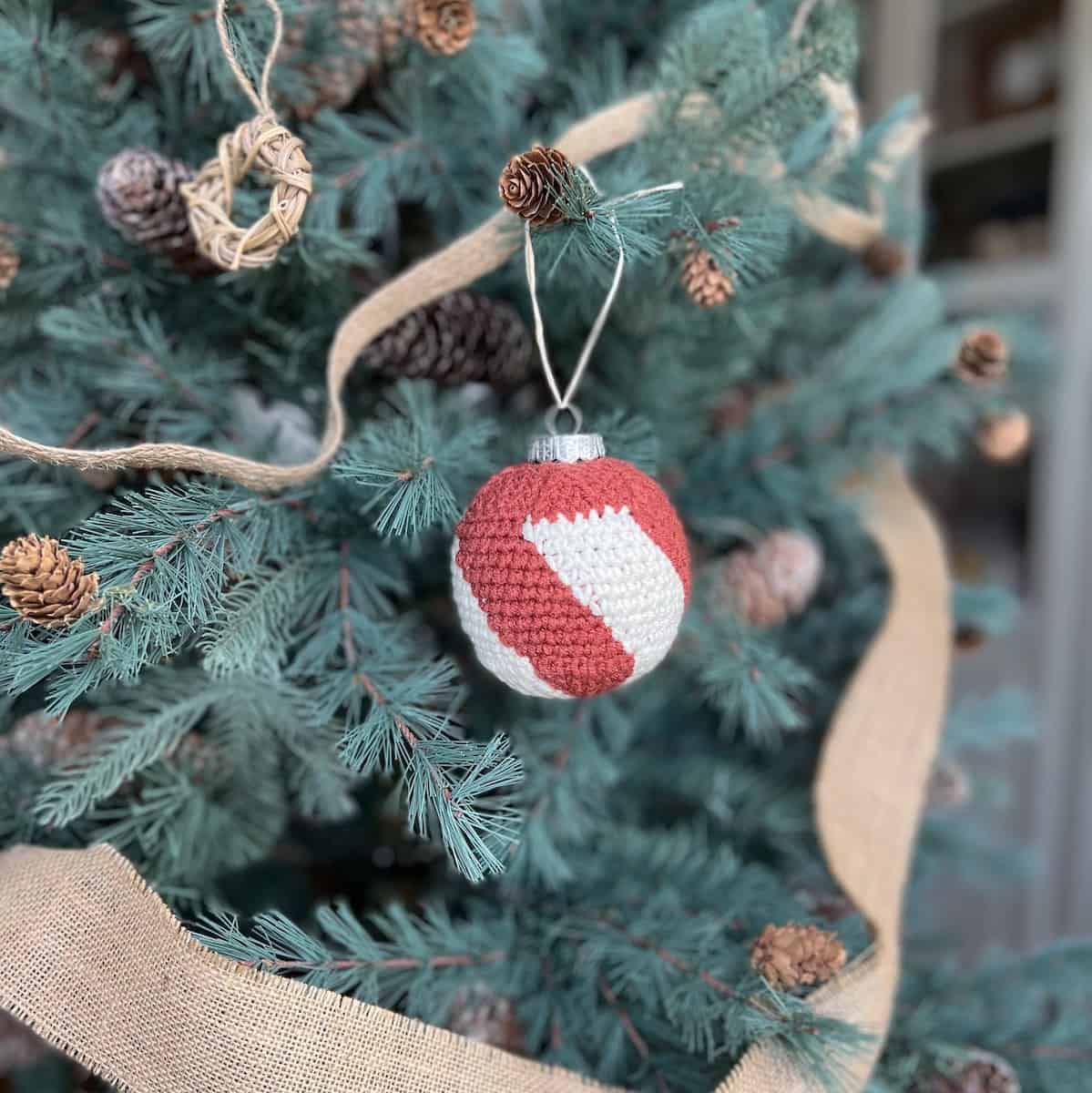This post may contain affiliate links. Please see my full disclosure and privacy policy for details.
You’ve probably heard of the term yarn weights, or maybe not if you’re very new to crochet, but what does it really mean and how is it used in crochet? Whether you’re a beginner crocheter or more experienced, understanding a yarn weight chart and how it can be used to choose the correct yarn and hook for your project is key.
I’m here to break it all down for you and give you a complete guide to yarn weights, and why you need to pay attention to it in your crochet projects.
We’ll cover what yarn weight means, the different standard weights and their uses, as well as how to understand a yarn weight conversion chart, and how to measure yarn weight using something called WPI tool.
We’ll also look at what ply means, and I’ll share some patterns you can try using the different weight yarns.
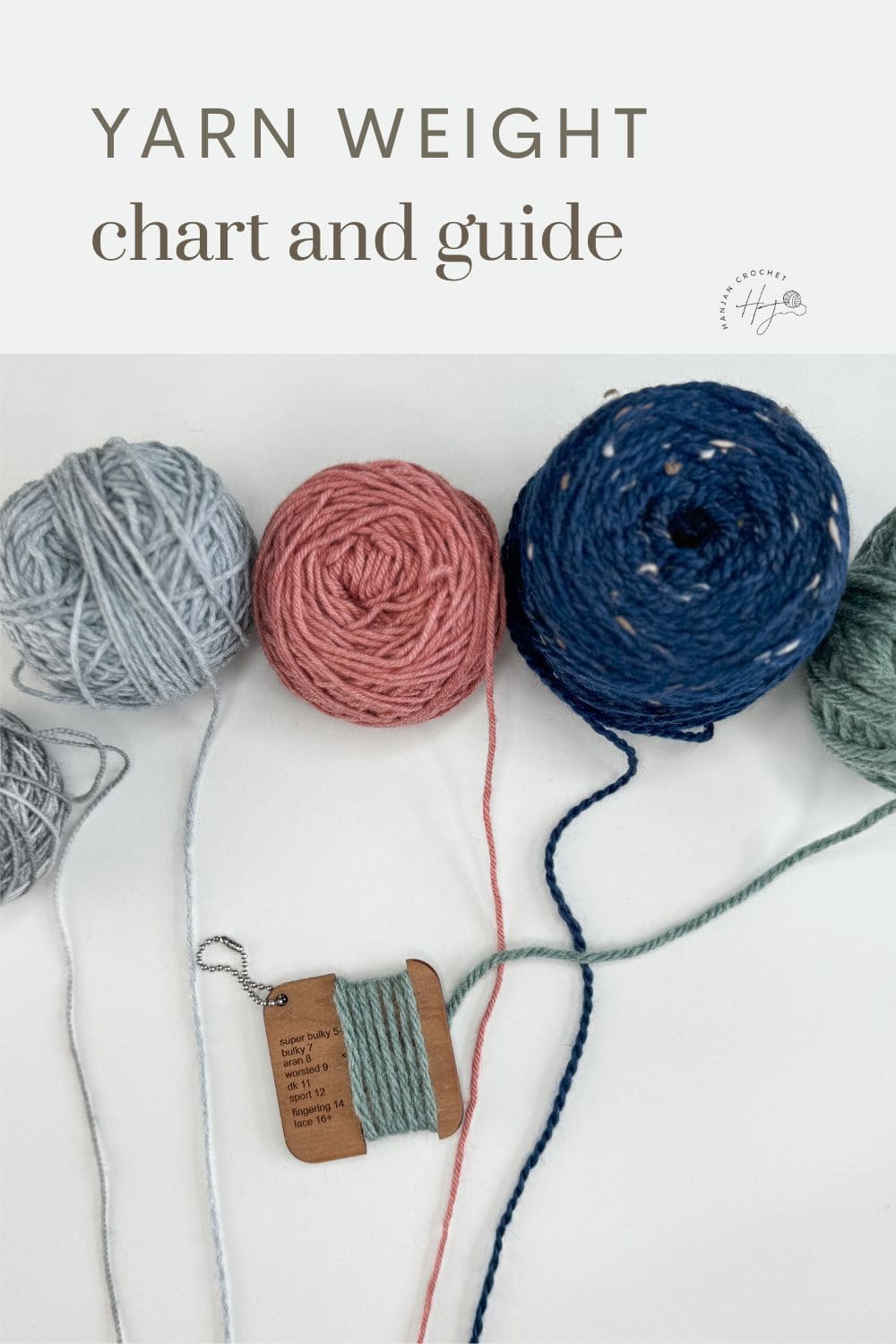
Table of Contents
What is yarn weight?
Yarn weight isn’t how heavy your yarn is, although you will also find this information on the yarn label!
Yarn weight actually refers to the thickness of the yarn. It is the diameter across the yarn strand which determines what weight a yarn is.
You will see some very thin yarns and some super thick ones, and as you can imagine they are not all used for the same things. To make things easier for us, there are standard yarn weights, which can then be used by designers and crocheters alike to select an appropriate yarn.
Crochet patterns are usually designed with a certain weight of yarn in mind. By using a weight system, we are able to easily find a yarn that is suitable for a particular pattern, even if you cannot get the exact same brand of yarn that the designer used.
There are 8 standard weights of yarn ranging in number from 0 to 7. They are called (from thinnest (0) to thickest (7)): lace, super fine, fine, light, medium, bulky, super bulky, jumbo.
Within each category, there are different common names used for these yarn weights, which vary country to country. Don’t worry, we cover all of the main ones below!
Why does yarn weight matter?
When making a crochet project, it is important to use the correct weight of yarn. If your yarn weight is smaller than the pattern recommends, your project will end up being smaller. If the yarn weight is larger, your project will be larger.
Of course, this doesn’t matter so much if you’re making a dishcloth, but if you’re making an item of clothing, you will need to make it the same size as the pattern states. Using the right weight of yarn and the right size crochet hook will make matching the size easier.
You will also need to learn about making a crochet gauge swatch to make sure your item is the right size.
Another reason yarn weight is important is to do with how the crocheted fabric will look and feel. In other words, the thickness of the yarn affects the drape of the fabric.
If you are trying to make a lacy cardigan that should flow and ripple, a thick super bulky yarn is just not going to work, as it will be too stiff. Similarly, if you are trying to make a cosy winter hat, then a super fine yarn is not going to have the desired result.
So you can see, there are quite a few reasons why we need to learn about yarn weights and get them right in our crochet projects.
Yarn weight chart
Luckily for us, there is a standard system in place.
The Craft Yarn Council sets out a standard yarn weight system, which can be summarised in the below chart. The chart shows the 8 yarn weights, hook sizes for each weight, the common names for yarns in that weight, as well as WPI, ply and gauge.
It’s a really handy yarn weight guide! If you’d like to download a PDF to keep then just sign up below to get it:

Standard yarn weight categories
Let’s take a look at these different yarn weights in more detail now:
0 Lace
Lace weight is the lightest weight yarn. It is often referred to as thread, lace fingering or 10-count crochet thread, and is used for really fine lacework and delicate items such as doilies.
1 Super Fine
Super fine is the next lightest weight of yarn. Sock, light fingering and baby yarn are all super fine, and as the names suggest, this weight is often used for socks and baby garments. In the UK, it is also referred to as 3-ply because of the number of strands making up the yarn.
2 Fine
Fine is slightly thicker than super fine and is often called fingering, sport or baby yarn. It is used for lightweight garments, such as summer sweaters. In the UK, this is called 4-ply.
3 Light
Light weight yarns are one of the most commonly used weights. This category is called DK or Double Knit, but is also called light worsted or 8-ply. This weight of yarn is a middle thickness, which means it is suitable for a wide range of projects, from blankets to garments and homewares.
4 Medium
Medium weight yarns are slightly thicker again, and is a good all-round yarn. It is commonly called worsted, afghan and aran yarn and works well in sweaters, blankets and hats.
5 Bulky
At this point, we are getting to some quite thick yarn. Bulky yarn is also known as chunky, craft or rug yarn and can be used for thick sweaters, blankets and winter hats.
6 Super Bulky
Super bulky is really quite a heavy weight yarn, which will work up very quickly and is good for beginners to see their stitches easily. Super bulky is also called super chunky or roving, and it looks great in cosy blankets and scarves.
7 Jumbo
Jumbo weight is the heaviest weight of yarn category. It can be used for arm knitting, chunky blankets and homewares. It can also be referred to as roving too.
How do I know what weight my yarn is?
When you are browsing the yarn in the craft store, you will probably want to know what weight the yarns are. Thankfully, most yarns come with a ball band or label which helps you to identify the weight. Look out for the little yarn ball symbol with a number on it like the ones below:
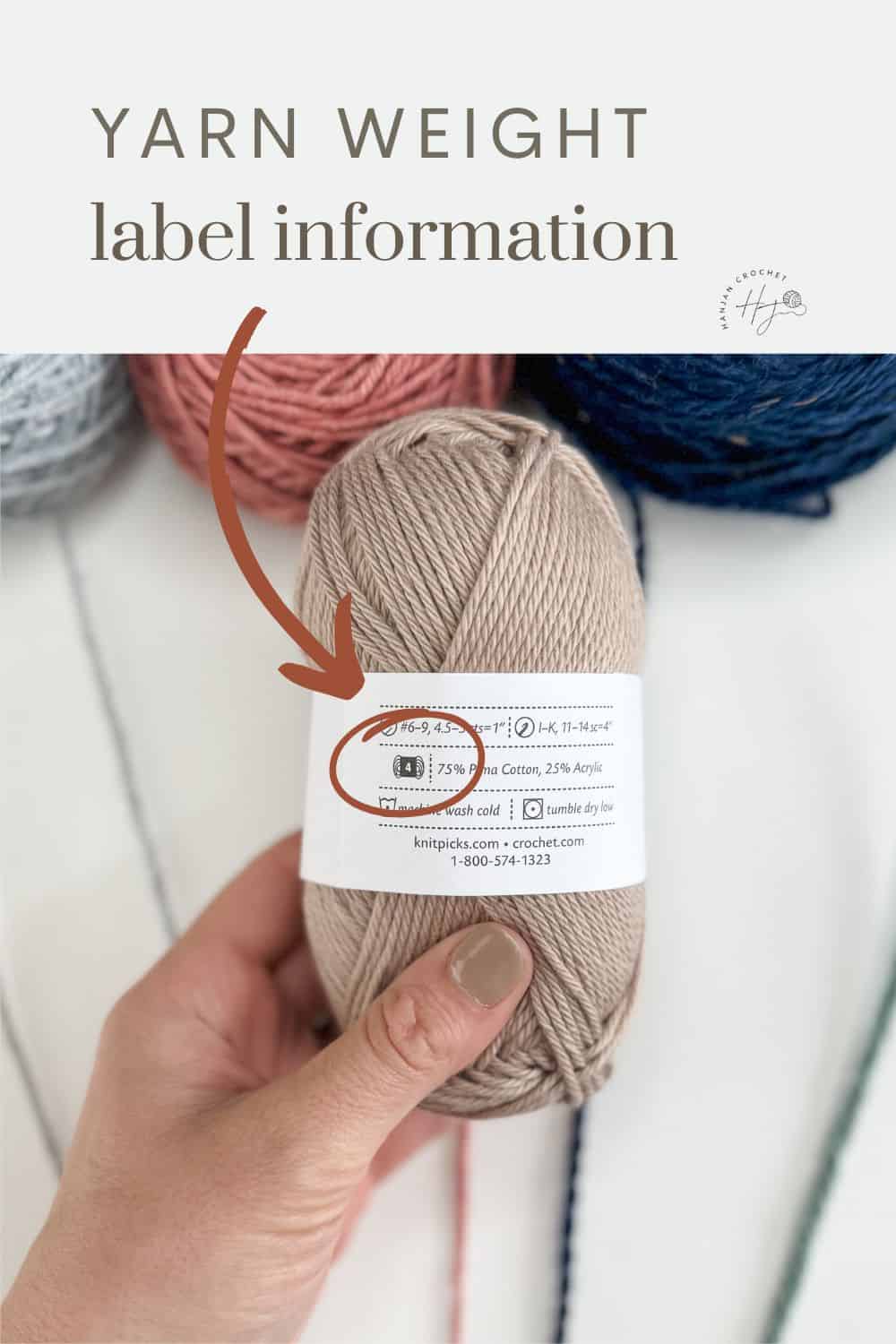
Yarns are often also sorted by weight in any larger stores.
What if I’ve lost the yarn details?
Sometimes, however, you don’t always have a label on your yarn. If you’re using up scraps or inherited some yarn from somewhere, the ball band may not be attached to the yarn any longer.
But have no fear, there is a way to find out what weight your yarn is, and that is with a clever thing called WPI.
What is yarn weight WPI?
WPI stands for Wraps Per Inch.
This is a really simple and quick way to find out (or double check) what weight your yarn is. All you need is a ruler or a WPI tool if you have one.
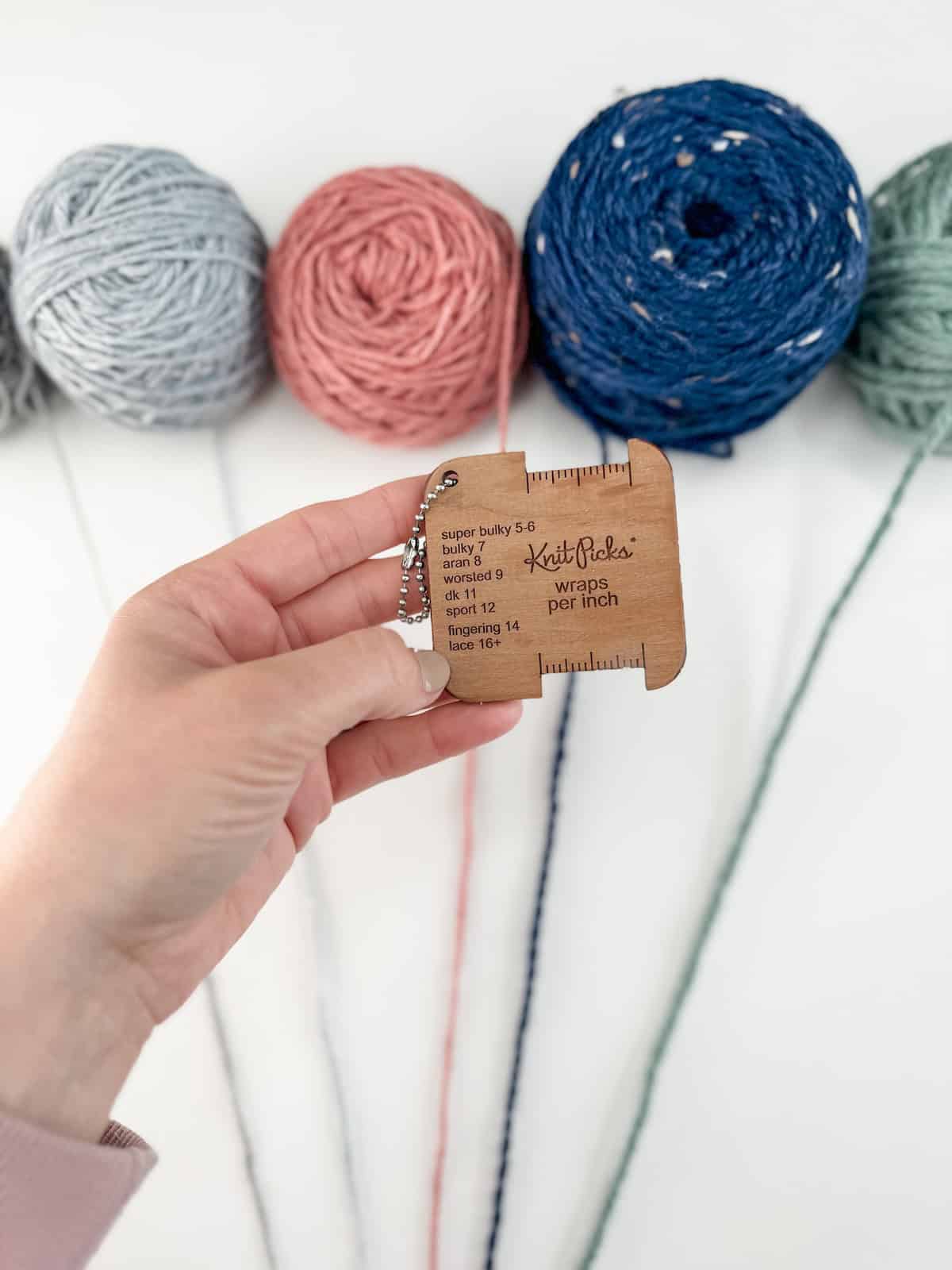
Using a ruler
What you’re going to do is grab your yarn and wrap it around and around your ruler. Make sure not to stretch the yarn, and also ensure that the strands of yarn lay flat next to one another on the front of the ruler. They want to be touching but not overlapping or too bunched up.
Then count how many wraps you have in 1 inch. If you have 12 wraps in 1 inch, then your yarn will have a WPI of 12. Compare this number to the yarn weight conversion chart above to find out what weight of yarn you have.
Using a WPI tool
A WPI tool has grooves in it to give you a visual of how thick the different yarn weights are. But it also usually has a 1 inch space for you to wrap your yarn around as per the ruler instructions above.
Do remember that if you have wrapped your yarn very tightly, the WPI number will be slightly different to if you wrapped quite loosely. This is why it’s very important to also make a gauge swatch.

So what does ply mean?
The eagle-eyed among you may have noticed the mention of ply in the yarn weight descriptions. Or you may have come across a requirement for an 8-ply yarn and not known what it meant. So what is ply?
Ply refers to the numbers of strands that make up your yarn. If you look at a ball of yarn, you may be able to separate the yarn into different strands – these are the ply. So if your yarn is made of 8 strands twisted together, then it is an 8-ply yarn.
You will see from the yarn weight conversion chart above that, in general, the higher number of ply you have in a yarn, the thicker the yarn will be. For example, a lace weight yarn will be 1, 2 or 3-ply, whilst a super bulky weight yarn could be as much as 14-ply.
Please note though that you cannot use ply as a measurement of yarn weight. The number of strands in a yarn do not correspond well enough to the total thickness of the yarn, and so we should always use WPI when trying to determine our yarn weight.
Choosing the right yarn weight for your project
Choosing the right yarn for a project can be tricky. You will want to consider not only the yarn weight, but also what the yarn is made of, how it’s going to drape, what colours are available, how it feels, and also the price.
But don’t be tempted to go for the pretty coloured yarn, if it is just not the right weight. As we have discovered, choosing the wrong weight yarn will lead to your project being far too big or far too small, and just not the right drape.
If you are following a pattern, have a look at the yarn recommendations. It will usually say what the weight category is, but if it doesn’t, check online for the full yarn details.
If you can’t use the recommended yarn for whatever reason, I would really advise to at least use the correct yarn weight. There are yarn substitution tools available online to help.
If you’re creating your own design, make sure to think about what you are making. A delicate, lacy shawl would not work at all well in a super bulky yarn, and likewise a cosy, winter sweater won’t come out right using a superfine weight yarn.
What hook size should I use?
Now that you’ve chosen your yarn, you’ll need to find a crochet hook to match. Take a look at the yarn weight chart above which gives the recommended hook sizes for the yarn weight.
However, this is just a guide to get started. You may find that you crochet quite tightly, and so you might want to use a larger hook to compensate. Conversely, if you crochet loosely, a smaller hook might suit you better.
The best way to find the correct crochet hook is by making a gauge swatch. A gauge swatch is a small sample of crochet made using the yarn and hook you intend to use for the project.
If you’re following a pattern, the designer will give you the intended gauge and you should try to match it, using the same stitch that they did.
If your swatch comes out bigger than stated, you can try a smaller hook size. If it comes out smaller, try a larger hook size. Or you may need to change the yarn you’ve chosen.
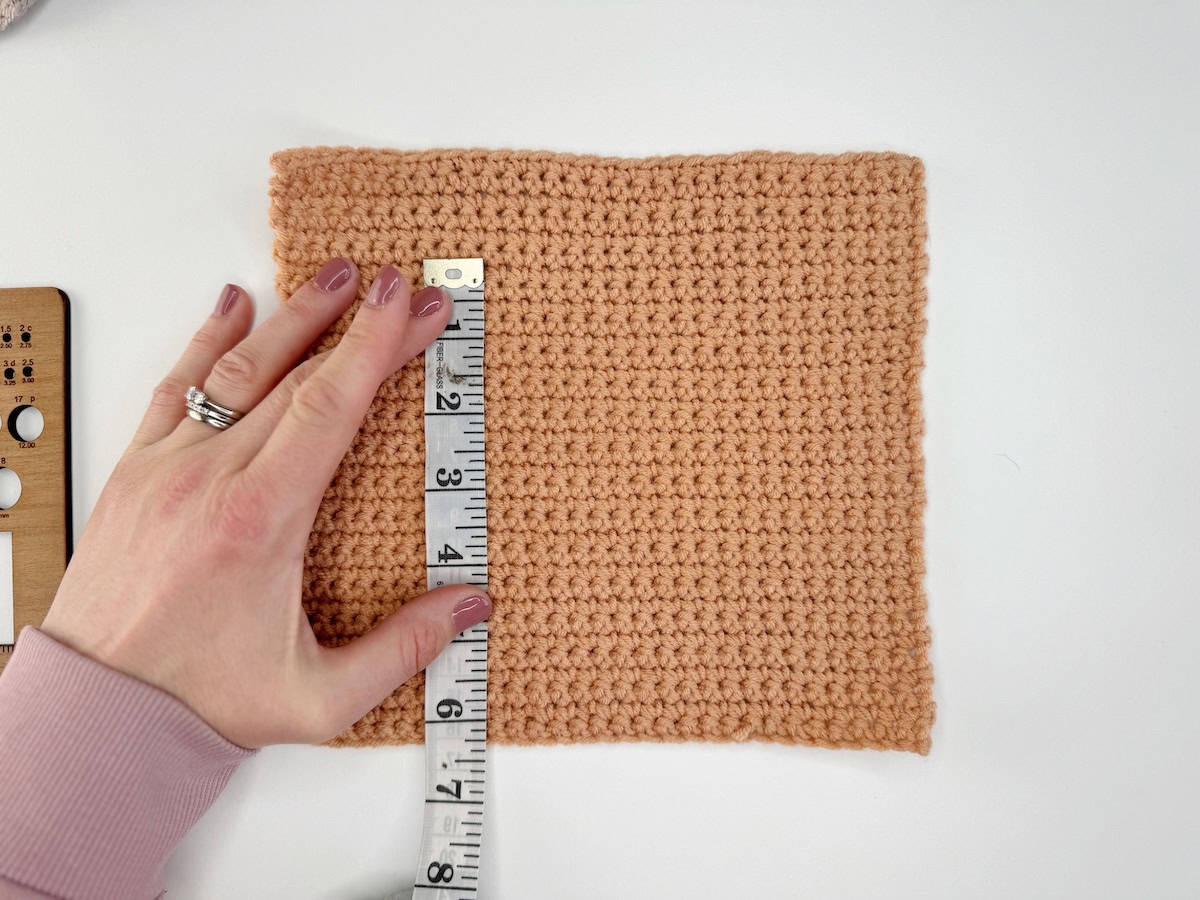
What should I do now I’ve learnt all about yarn weights?
If you’d like to learn more, I have a great guide about the best yarn for crochet blankets which includes links to different blanket patterns of all different yarn weights.
Yarn weight patterns
If you’re itching to get crocheting, here are a few patterns in different yarn weights that you might like to have a go at:
- Lace: this mohair scarf is beautifully delicate, perfect for dressing up any outfit.
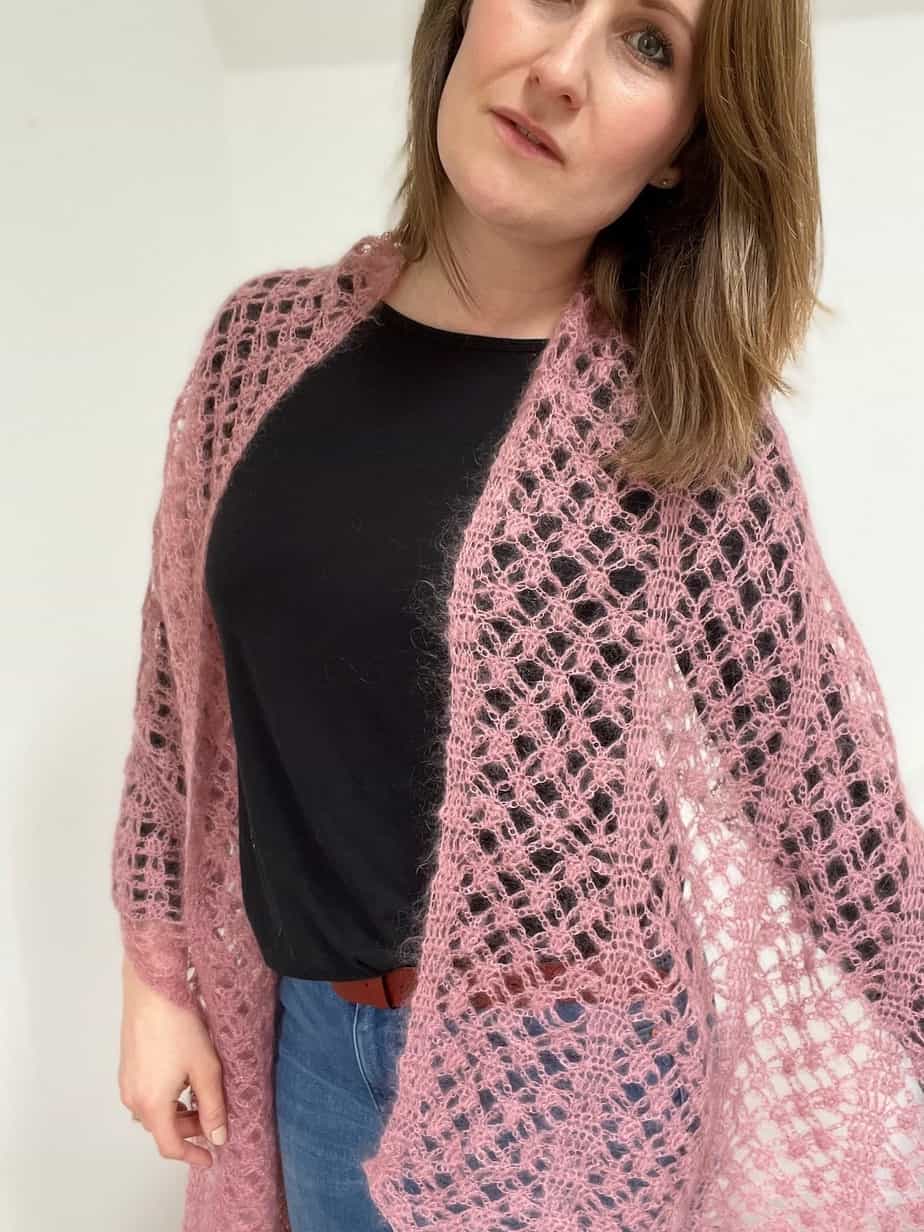
- Superfine: the Hawthorne Tee is an easy top down v neck crochet top made using fingering yarn.
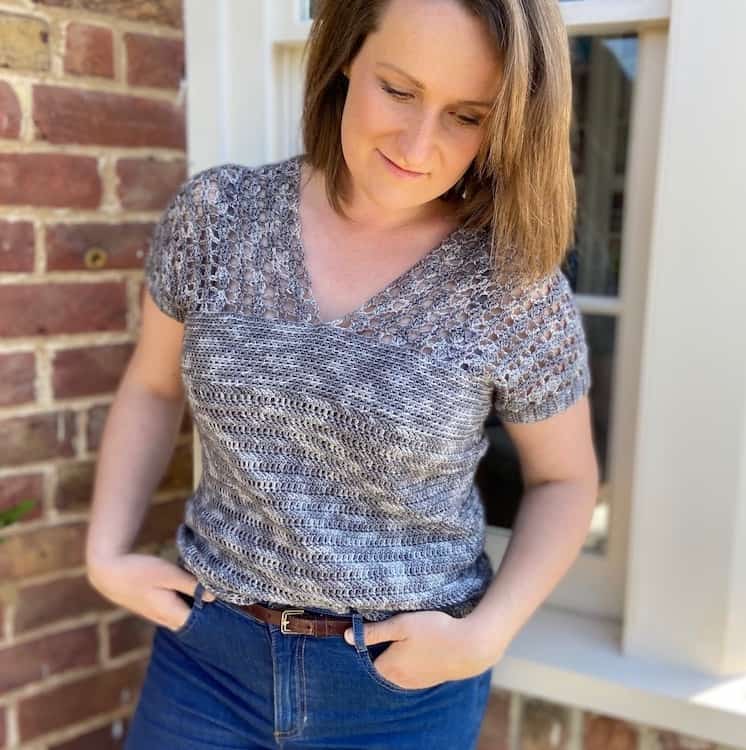
- Fine: Try this hexagon crochet flower blanket, which can be made in a lovely sport weight yarn.
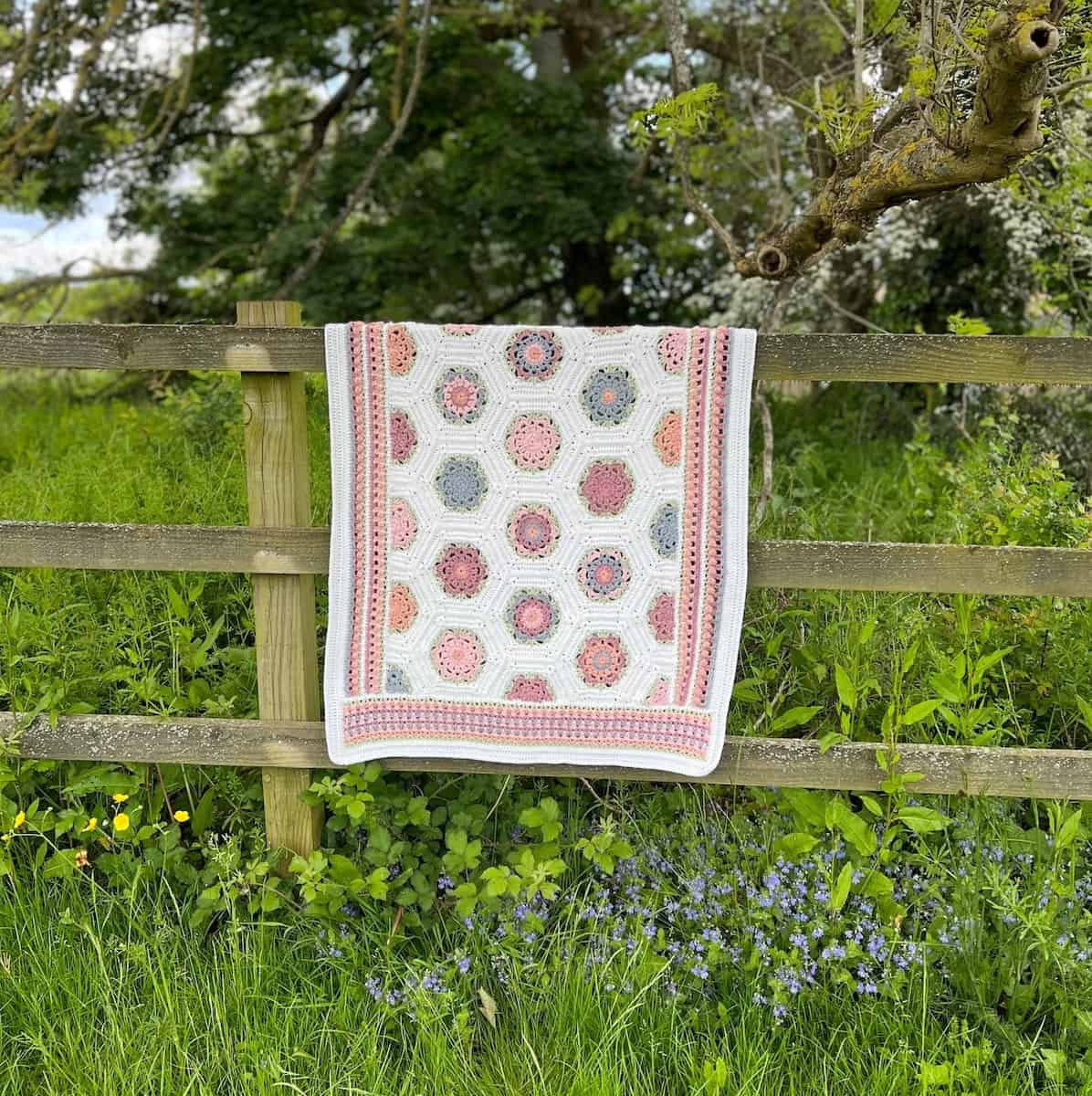
- Light: Try your hand at mosaic crochet with the Hayden Tote Bag made in DK yarn.
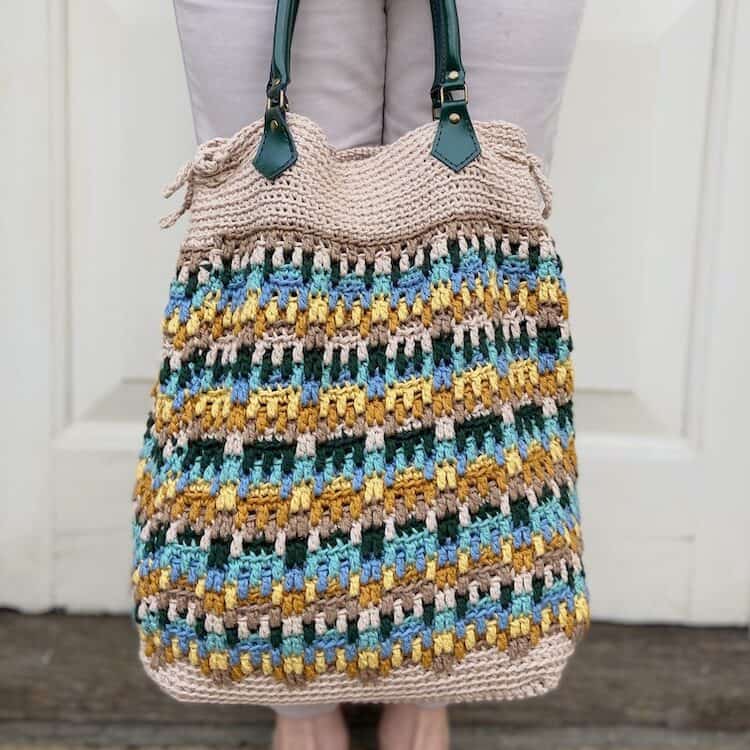
- Medium: The modern granny square cardigan is a great take on the traditional granny square using worsted weight yarn.
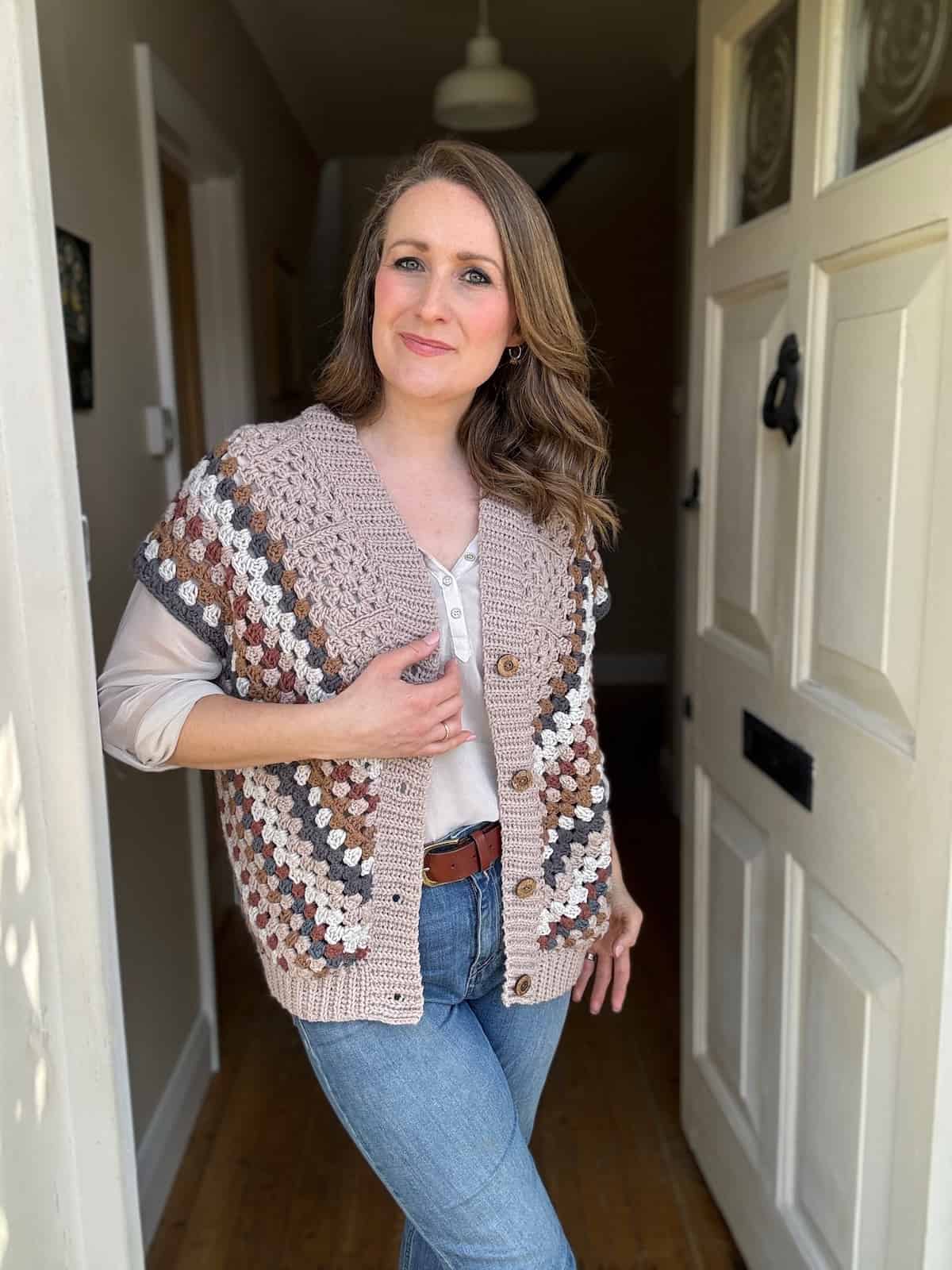
- Bulky: This pillow pattern uses a bulky weight yarn to create a stunning cable design.

- Super Bulky: Have a go at a super bulky throw pattern for a quick, but cosy make.

I hope you’ve enjoyed learning all about yarn weights and the yarn weight chart with me!
I’d love to know what you think and if you made any of the projects in the different weight yarns! You can sign up to become a member of HanJan Crochet and I’ll let you know about all the fabulous crochet adventures, offers, lives and more too!
See you there!
Learn Some More Crochet Stitches With Me
If you’re just starting out, take a look at my beginner crochet guides.
If, like me, you’re eager to learn all the crochet stitches and techniques you possibly can then I’d love you to take a look at my crochet stitch tutorials – here are some of my favourites though:
- Chain Stitch – this is the first step on your way to crocheting
- Crocheting in the front and back loops – a fantastic technique to give lots of different effects
- Double Crochet Moss Stitch – a great stitch for easy colour work
- Half Double Crochet Stitch – a beautiful and easy stitch to learn

